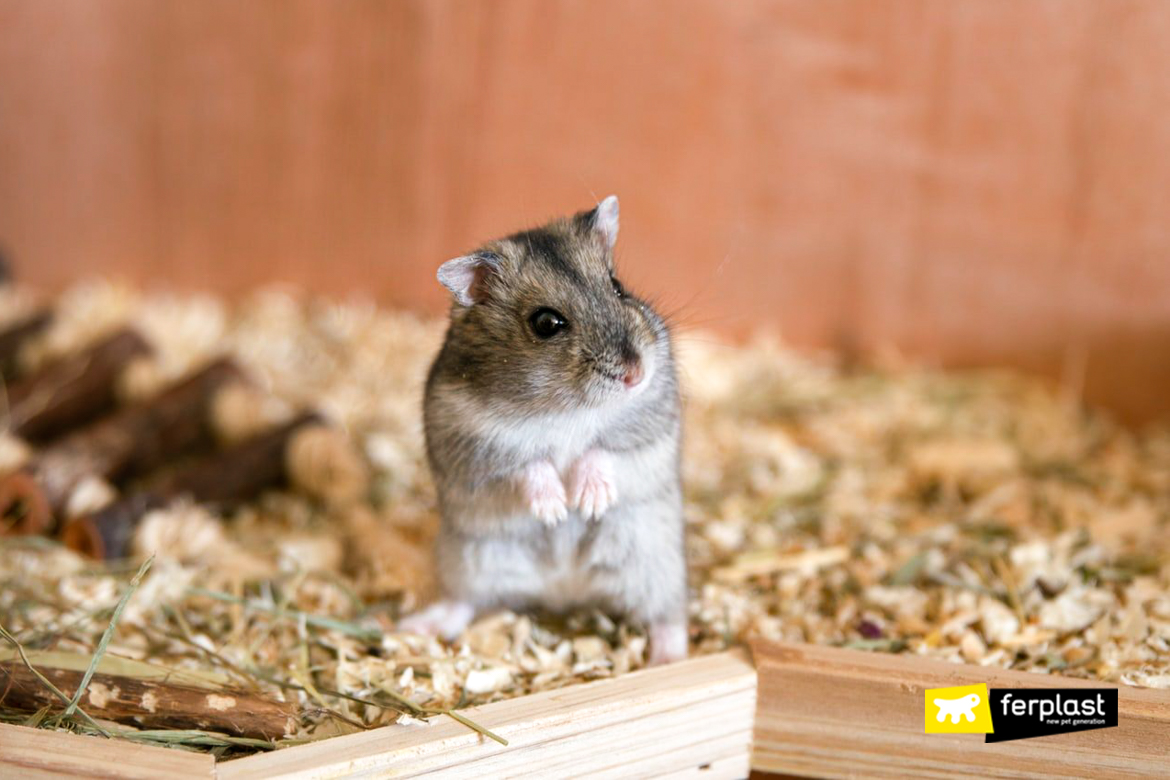How do hamsters communicate with humans? Understanding the needs and requirements of this rodent is possible by correctly interpreting and examining his attitudes. Here is an easy guide to be able to understand hamsters so that we can give them the best care!
Hamsters have a behavioral standard that is easy to understand. Have you ever wondered what it means when he sleeps on the wheel or lies down on his stomach? What does he want to communicate by gnawing at the bars of his cage? Understanding what he wants to tell you is easy, here are some tips to understand hamsters’ behaviors!
The hamster sleeps on the wheel
If the hamster decides to sleep on the wheel, rather than using it as a running tool, it means that the place where he should rest is too bright. Being nocturnal animals, they need poorly lit areas, so we suggest you make sure that there is always a small house in its cage. It will be his safe zone away from any danger.
Ferplast’s hamsters cages have the advantage of being all equipped with a house, a wheel, feeders and drinking bottles, to offer the rodent all comforts. If your friend would need anything else, you can expand the gadgets by purchasing them separately. For example, there are double-sided beds in fabric and fur, wooden or plastic houses and feeders of various sizes.
The hamster sleeps on his stomach
Another strange hamster’s behavior occurs when sleeping on his stomach. There are two causes: either he is overweight or he is too hot. In the first case, check on his diet and invite him to play, move more on the wheel and let him free to walk more often. If the temperatures are high, make sure you always have enough fresh and clean water. You can also place cold water bottles covered with a cloth around the cage to cool the environment.
 He gnaws at the bars
He gnaws at the bars
Hamsters have the tendency to bite whatever comes within range, however if he begins to gnaw on something unusual like cage bars, he is experiencing discomfort. The cage could be too small or he is particularly bored!
Opt for a spacious cage model, such as the wooden cage Hamsterville by Ferplast. It is structured on two floors, connected by a wooden staircase, to offer great freedom of movement to the hamster. It is a practical and comfortable design product. It is made of sturdy FSC® certified wood coming only from forests managed in a correct and responsible way.
The habitat is equipped with a useful removable bottom to easily proceed with cleaning and maintenance operations.
To overcome the problem of boredom, you can insert games such as sound tunnels or sticks inside the cage.
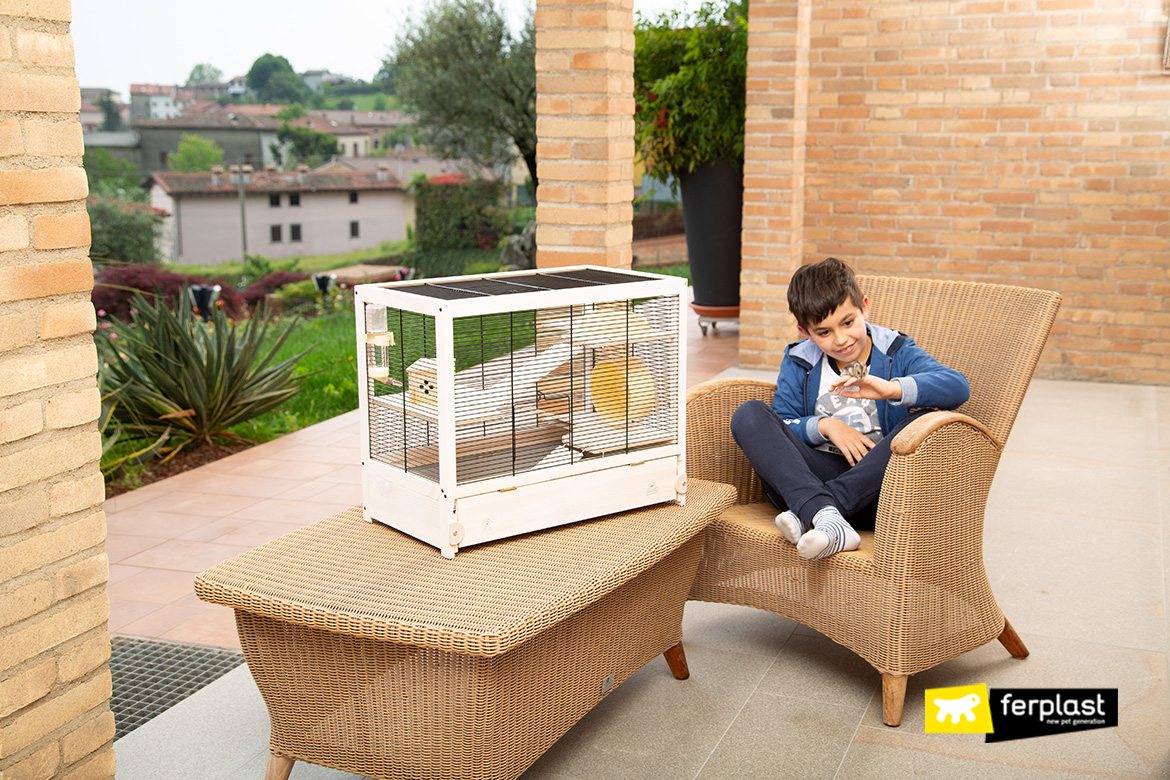
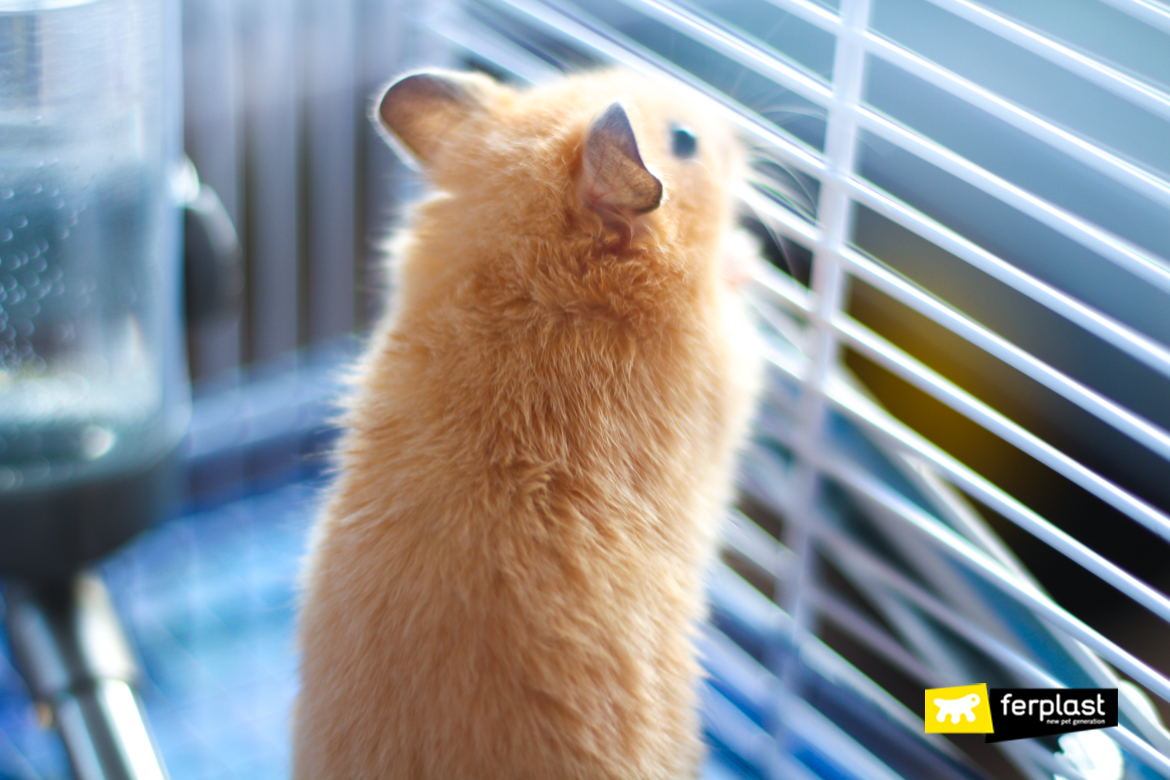 Hamster climbs on the bars
Hamster climbs on the bars
When the hamster continues to climb the bars it could likely means that he is bored. For this reason it is good to make the space more fun with some new objects, such as a toy, the wheel or new modules. The Hamster cage 100 of Ferplast is divided into three floors and is designed to be connected to other housing modules, tunnels or other accessories for rodents. The goal is to create a spacious habitat in which the cute animal can have fun. A valid alternative is the Duna Fun cage Large, made of a large bottom and a transparent plastic lid, also prepared for attachment with other cages or modules. Very useful for this purpose are the modules Lab and Gym designed to offer greater possibilities for entertainment to the little guest and to keep him always in shape.
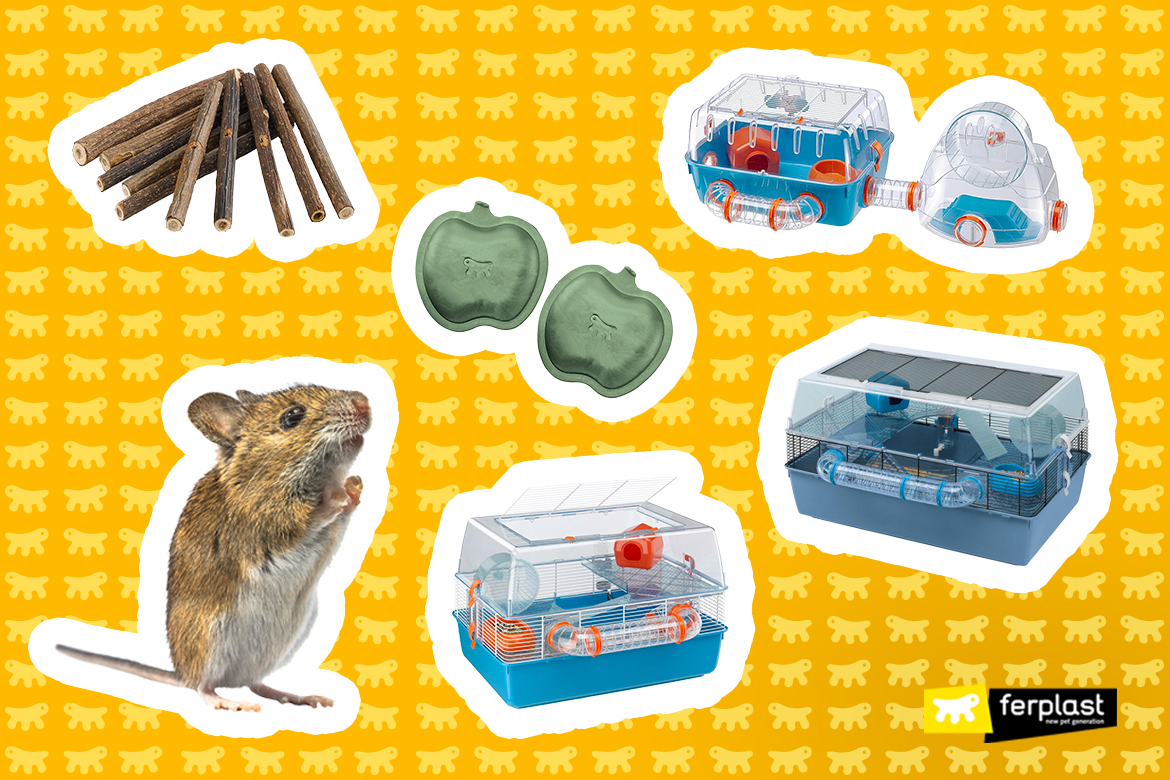
 Hamster stands on two legs
Hamster stands on two legs
If the hamster gets into a marmot position, standing on his hind legs and his nose up, it means he is studying the surroundings. Being a very curious animal, they try to get to know the world with their sense of smell, one of the senses they have developed the most.
Hamster puts its ears back and squats
When the hamster puts its ears back and squats it means he needs to be reassured after getting scared. Try to calm him down by offering him a game with which he can release the tension: games like Goodbite Tiny and Natural are an excellent solution. They are a useful tool to keep rodents’ teeth always filed and to satisfy their natural need to gnaw. These are ecological and biodegradable products, based on natural components, which do not alter the animal’s diet.
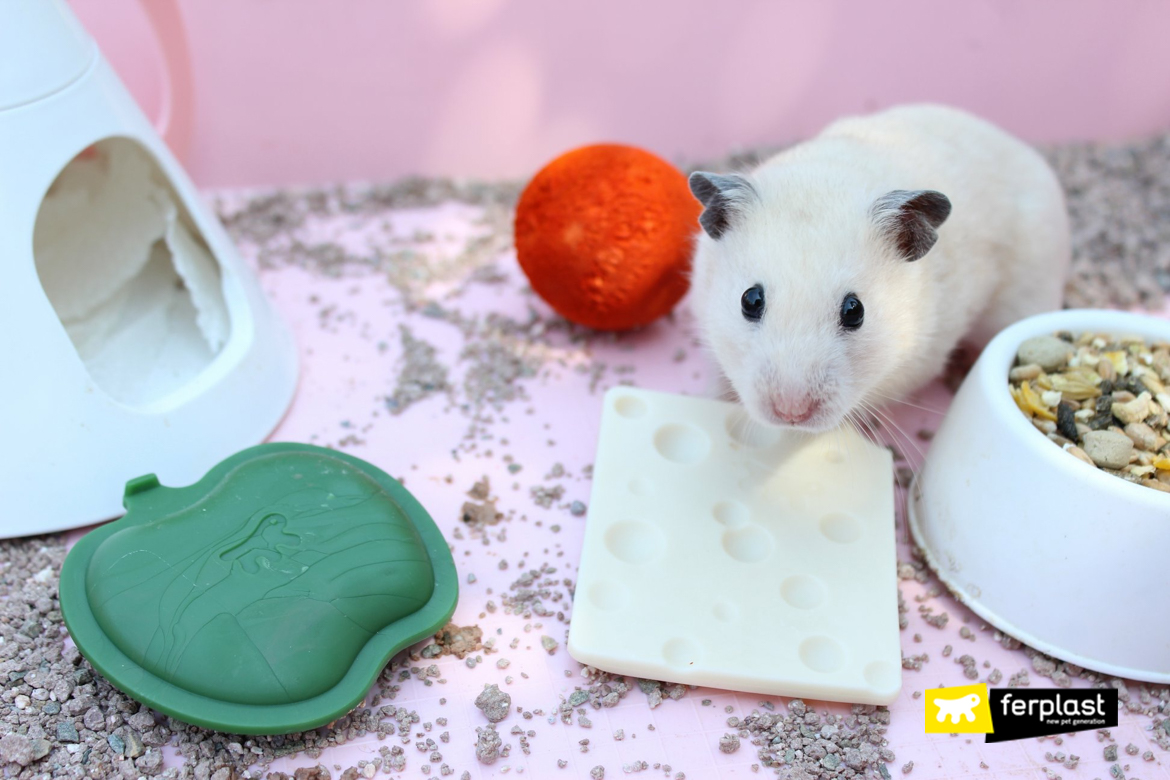
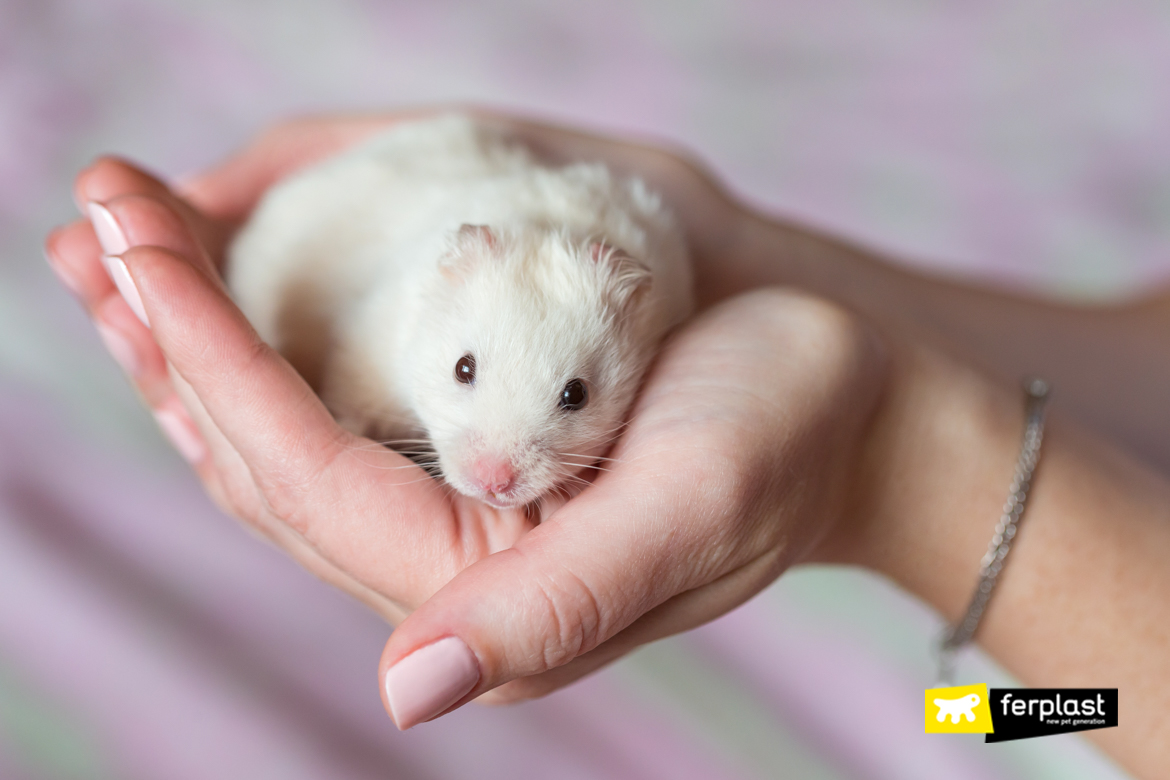
Analyzing the behavior of hamsters is very important to understand them and learn how to interact with them correctly. Remember that to have a happy life they need space and freedom of movement, so always buy a large cage with all the accessories.



